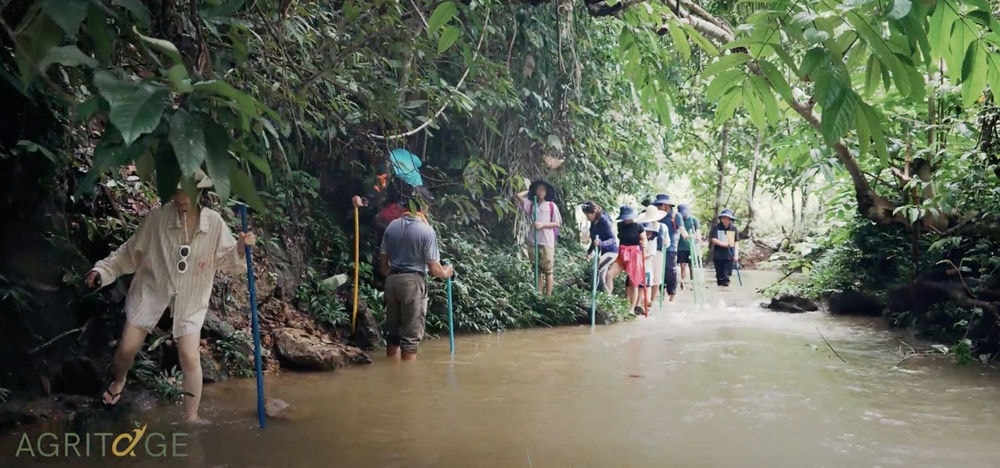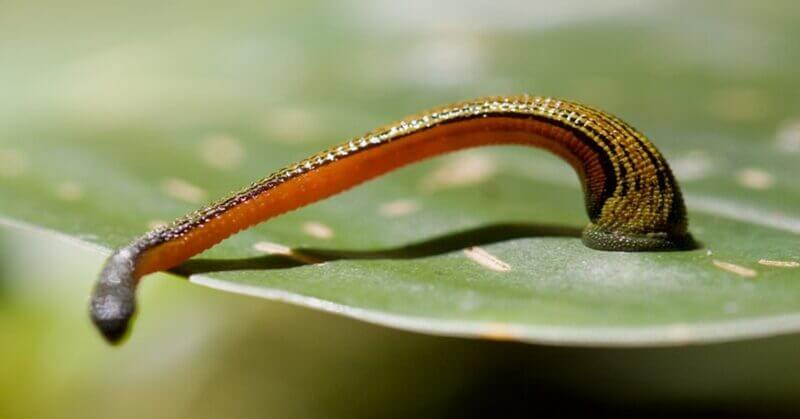As the season changes accompanied by damp weather conditions, it becomes a breeding ground for insects, especially leeches. Although these creatures do not pose severe health risks to humans, they are a significant concern for many who venture into the forest. In today’s article, Van Ho Agritage will explore this creature and share experiences on prevention and how to handle emergencies when bitten by leeches!
About Leeches
Leeches are creatures belonging to the family of leeches, thus sharing similar characteristics and appearances. They are small, averaging 100mg in weight, and range from 2-5cm in length, with suction cups at both ends. Leeches thrive in moist conditions with temperatures between 25-28°C, making them more active during early morning or late evening when the temperature drops. Due to their poor tolerance to cold, areas of the human body that are warmer, such as behind the knees, thighs, groin, back, armpits, neck, etc., are ideal for leeches to feed on.

Leeches can detect scent and vibrations, and when biting, they tend to attach to areas not covered by clothing or where the skin is softer to feed. If a leech attaches to you, it’s essential to remove it promptly. Once they’ve targeted you, they attack decisively, with their mouth’s edges firmly attaching to the body to draw blood. Typically, it takes about a minute for a leech to bite and another 2-3 minutes to start feeding. The bite is relatively painless, making it hard to notice. While feeding, leeches secrete saliva containing the anticoagulant hirudin, preventing the blood from clotting. The bite wound usually doesn’t hurt but can cause prolonged bleeding, potentially dangerous if not addressed promptly, especially if leeches enter sensitive areas like the nose, trachea, or digestive tract.
Preventing Leech Bites
When entering the forest, opt for protective clothing such as long-sleeved shirts, long pants, and high socks made of thick material to prevent leech entry. The market offers various anti-leech products, or you can prepare salty water or bitter insect repellents to spray/apply from the feet up to the knees (in dry weather) or even the thighs and hips (in wet conditions), including ears, neck, shoulders, arms, and armpits. Also, apply at shoelaces, shoe collars, sock edges, pant legs, shirt sleeves, and hats.

While moving, avoid dense, moist areas, and minimize direct skin contact with the ground or water sources. Choose dry, clean spots for resting or setting up tents, and avoid standing or sitting in one place for too long.
Emergency Handling of Leech Bites
If bitten by a leech, Van Ho Agritage suggests the following emergency steps:
- Calmly remove the leech by sliding your finger across the skin and pushing the smaller (sucking) end of the leech, then the other end, flicking it away before it attaches to your finger. If it holds on too tightly, use a thin-edged object like a knife to pry it off, or apply salt around the bite area to make it detach immediately.
- Clean the wound with clean water or saline solution. Press firmly over the wound to stop the bleeding, then bandage it up with medical gauze until the bleeding stops, applying insect bite relief ointment to reduce itching.
Above are the experiences in handling emergency situations when being bitten that Van Ho Agritage wants to share with you. Hope you find this information useful!
Emergency Handling of Leech Bites. Image source: Hoa Ban Food







